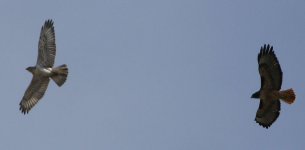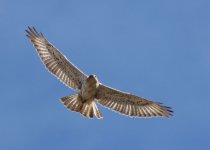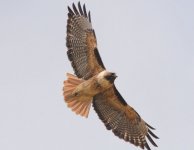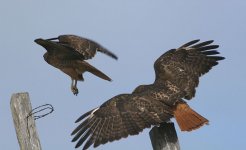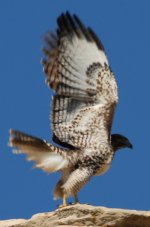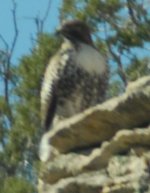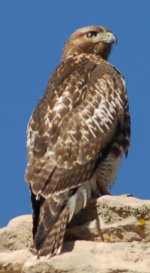We will likely have to agree to disagree, and that is just fine, particularly in a raptor thread with angle and exposure issues! However, in the spirit of discussion of interesting ID features, I did want to add one more thing I just noticed.
While the view of the primaries is ambiguous, we do have a nice view of the greater primary coverts. Our eye runs up the line of greater upperwing coverts, and then they suddenly
turn darker when we reach the primary coverts. Now, the interesting thing about Red-tail juveniles, is that the pale wing panel is comprised of both the primaries and the primary coverts. Indeed, while Brian Wheeler is quite cautious about what characteristics all morphs of juvenile Red-tails have in common, one item that he does have in bold print is:
"In flight, the primaries and respective greater coverts are paler than the secondaries and their respective coverts, and create a large pale panel on the outer half of the wing."
Most interesting how this feature we see clearly does appear to be the
exact opposite of a universal characteristic for all juvenile Red-taileds, eh? Particularly in the larger context of that long, narrow, wing lacking a secondary bulge, that is lifted in that nice strong dihedral...





